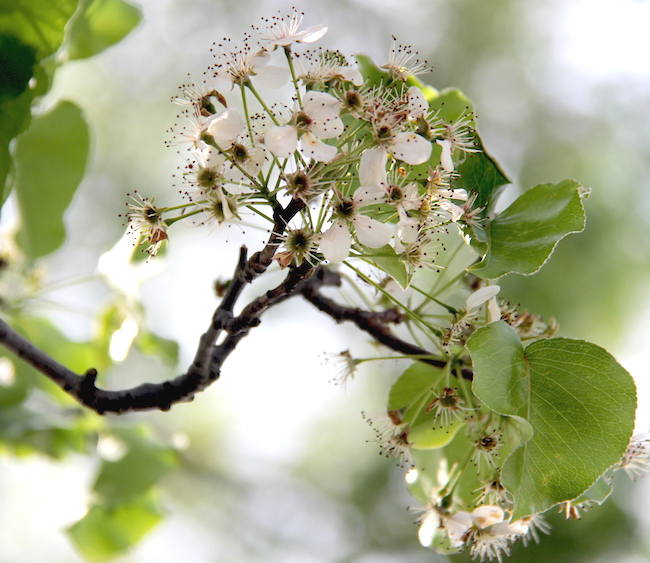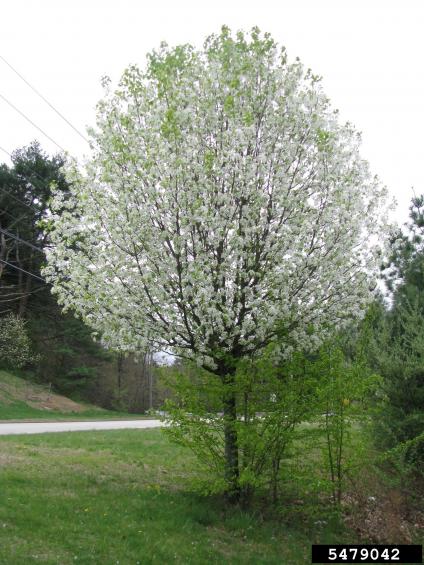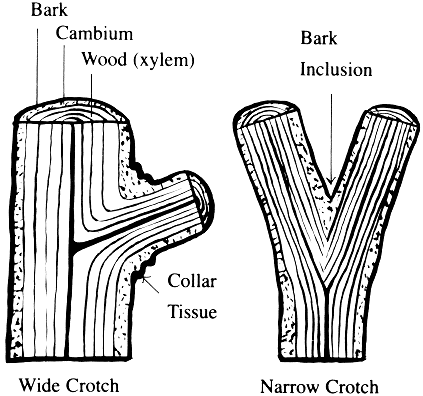You’ve doubtlessly seen white blooms lighting up the landscape everywhere this spring. These early white flowers are a beautiful sight but they are more insidious than they seem. You may recognize this tree as the much-hated Bradford Pear.
It was originally brought to the US after the European pear crop in the Western part of the United States was destroyed by fire blight, a pollinator-spread bacterial disease. Pyrus calleryana, or Callery pear, was found to be mostly resistant to fire blight so seeds were collected from China and a breeding program began. The specific “Bradford” cultivar came from a group of seeds collected in 1919. Many hectares of Pyrus calleryana were planted, inoculated with fire blight, and tested for resistance at the USDA Plant Introduction Station in Glenn Dale, Maryland. The research showed that in addition to disease resistance, these trees could tolerate a wide range of growing conditions and drought. The Callery pear became a widely used rootstock for many pear species because of this.


Through these test plots and research, one thornless variety was identified and tested as a street tree in a residential setting. This variety was successful so it was named ‘Bradford’ after a horticulturist at the station and was introduced commercially in the early 1960s. The Bradford pear took off and was soon one of the most popular ornamental street trees in urban areas. It was known for fast growth, compact form, early spring white flowers, disease resistance, and ability to thrive in poor and variable soil conditions.
It continues to be propagated to this day by grafting cuttings onto the wild-type Pyrus calleryana rootstock, meaning all Bradford pears are clones. These clones were thought to be sterile but have earned an invasive status after spreading rapidly. This has happened as other pear varieties have been developed and planted and have crossed with the Bradford pear, producing fruit that is then widely spread by birds. Damage to the wild-type rootstock can cause it to sprout and go on to produce fertile fruit. These hybridized wild Callery pear trees are thorny and create dense thickets that rapidly spread. They limit the amount of wildlife food, out-compete native plants, damage equipment and can injure animals and humans.
Besides the invasive issues of these trees, one of the traits it was originally praised for is actually quite problematic. Bradford pear trees were admired for their rounded pyramidal or teardrop shape formed by the almost vertical angle of their branches. While this may be considered an attractive look in the landscape, this creates a weak crotch angle of the branches, causing them to easily split in storms and cold weather events and fail after 10 to 20 years. The ideal crotch angle for a branch is 45 to 60 degrees. The UGA publication Basic Principles of Pruning Woody Plants explains, “The bark of the adjoining branches becomes tightly compressed or “included,” preventing normal wood development. Winter ice, trapped down in crotches, often causes narrow-angled branches to split.”

What’s more, the flowers, although beautiful and one of the first in the spring, have a terrible smell! You may have smelled it without even realizing where it was coming from. It is often described as the smell of rotten fish. This is likely used as a way to attract pollinators, but this is one big reason the Bradford pear is so hated today.
Consider planting alternatives to the Bradford pear, like Eastern redbud, serviceberry, fringetree, crepe myrtle, or dogwood.
Please contact your local extension office for herbicide recommendations and control methods.
SOURCES:
https://academic.oup.com/bioscience/article/57/11/956/234351#126536463
https://content.ces.ncsu.edu/callery-pear-bradford-and-other-varieties-and-their-invasive-progeny
https://mdc.mo.gov/discover-nature/field-guide/callery-pear-bradford-pear
Leave a Reply